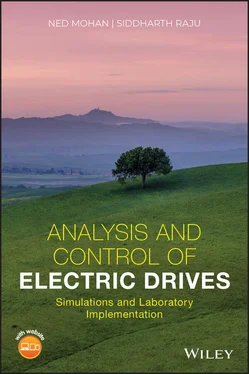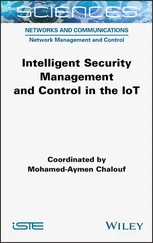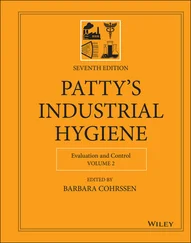This textbook is divided into three parts. Part I of this textbook covers the fundamental principles that govern ac machines and electric drives. Using these fundamentals as the basis, the steady‐state operation of ac machines and drives is analyzed in Part II. These two parts can be the basis for an undergraduate course, as we have at the University of Minnesota.
In a graduate course on this topic, students may not have the requisite background of what was covered in the undergraduate course using Parts I and II. Therefore, a quick review is warranted prior to the dynamic control of ac drives for precise speed and position, using vector control of ac drives. This is covered in Part III of this textbook.
This textbook is intended for a first course on the subject of electric machines and drives where no prior exposure to this subject is assumed. To do so in a single‐semester course, a physics‐based approach is used that not only leads to a thorough understanding of the basic principles on which electric machines operate, but also shows how they ought to be controlled for maximum efficiency. Moreover, electric machines are covered as a part of electric‐drive systems, including power electronic converters and control, hence allowing relevant and interesting applications in wind turbines and electric vehicles, for example, to be discussed.
This textbook describes systems under steady‐state operating conditions. However, the uniqueness of the approach used is that it seamlessly allows the discussion to be continued for analyzing and controlling of systems under dynamic conditions using vector control in a graduate‐level course.
For discussion of all topics in this course, computer simulations are a necessity. These simulations utilize MATLAB/Simulink and the Sciamble Workbench ( http://www.sciamble.com) – a University of Minnesota startup. The simulations in Sciamble Workbench can be seamlessly implemented to control hardware, as demonstrated by hardware experiments in an associated laboratory, to complement courses taught using this textbook.
The authors are greatly indebted for two grants from the University of Minnesota from the Office of Naval Research (ONR): N00014‐15‐1‐2391 “Web‐Enabled, Instructor‐Taught Online Courses,” and N00014‐19‐1‐2018 “Developing WBG‐Based, Extremely Low‐Cost Laboratories for Power Electronics, Motor Drives, and Power System Protection and Relays for National Dissemination.” These grants allowed the development of the Workbench simulation platform, which is available free‐of‐cost for educational purposes. These grants also allowed the development of a low‐cost hardware laboratory, available from Sciamble ( https://sciamble.com/) – a University of Minnesota startup.
Analysis and Control of Electric Drives: Simulations and Laboratory Implementation is accompanied by a companion website:
www.wiley.com/go/Mohan/Vectorcontrolinelectricdrives
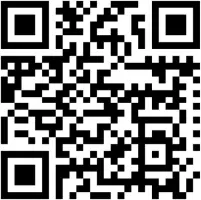
The companion website page includes the following items that are mentioned in the textbook:
1 Links to research reports as Appendices
2 All the simulation file in MATLAB/Simulink
3 All the simulation files in Sciamble Workbench
4 Exact parameters of motors used as examples
5 Manual of the Hardware Laboratory, and
6 Solution to some select back-of-the-chapter problems.
Part I Fundamentals of Electric Drives
1 Electric Drives: Introduction and Motivation
Electric machines and electric drives are shown by their block diagrams in Fig. 1-1a and b. Electric machines were invented more than 150 years ago and have been in use ever since in increasing numbers in a variety of applications. As shown in Fig. 1-1a, electric machines convert energy from the electrical system to the mechanical system, and vice versa. In their motoring mode, where the machine is called a motor, the electric power P electfrom the electrical system at the certain voltage/current magnitude and frequency get converted to the mechanical power P mechto the mechanical system at corresponding torque and speed. The opposite is true for a machine in its generator mode, where power from the mechanical system gets converted and is supplied to the electrical system. In machines, as shown in Fig. 1-1a, some of the quantities (voltage/current, torque/speed) are dictated by external sources, and no attempt is made to control the others.
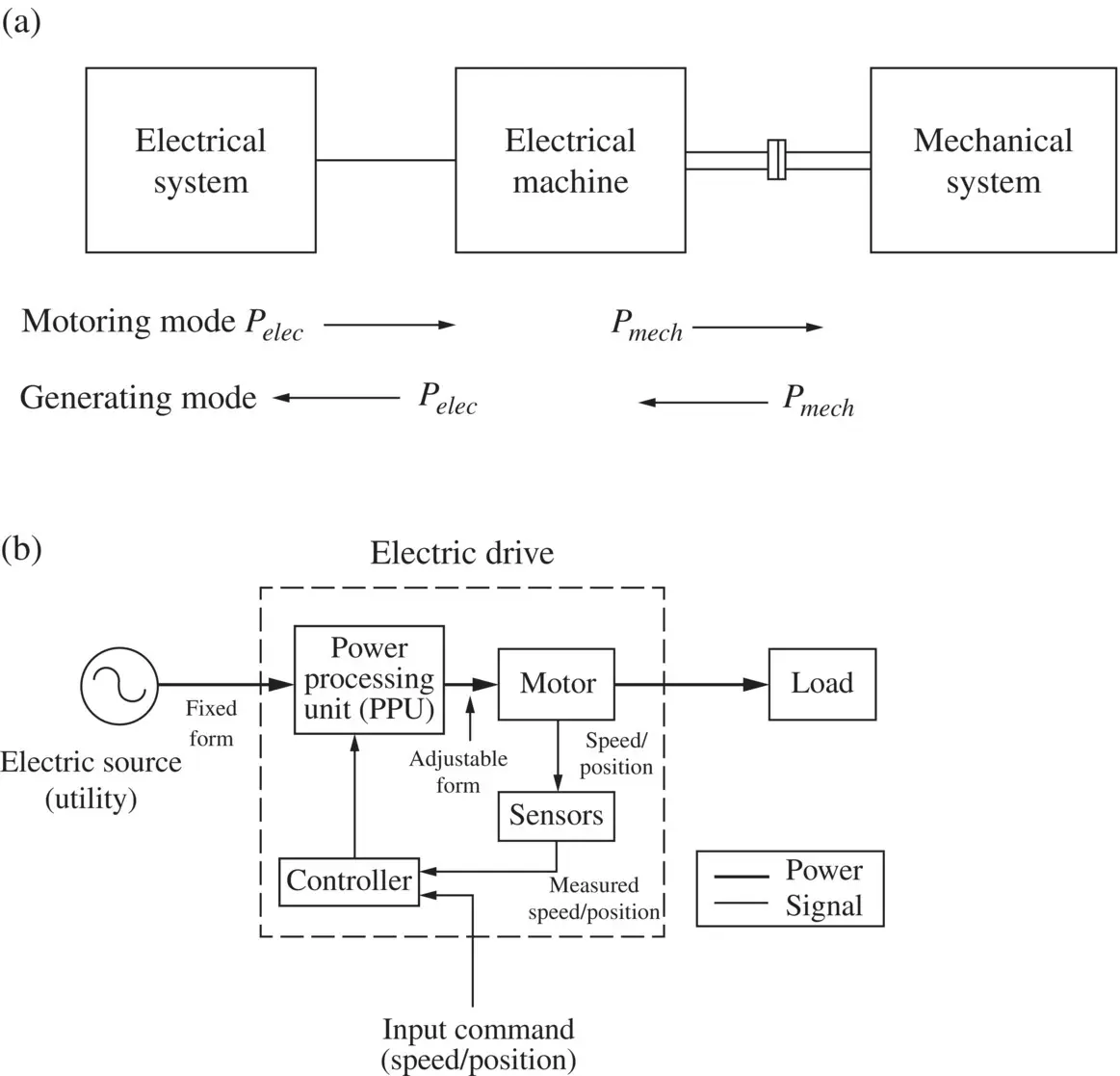
Fig. 1-1 Block diagrams of (a) electric machines and (b) electric drives (motoring mode shown).
However, in certain applications, it is required that for given quantities on the electrical or the mechanical side, the other quantities be controlled, as in a wind turbine. This is made possible in electric drives shown by their block diagram in Fig. 1-1b. It should be noted that in the literature and in trade publications, electric drives sometimes refer only to the power electronic converter and its control, excluding the motor. In this textbook, however, electric drives refer to the entire block, which is shown dotted in Fig. 1-1b, that includes power electronic converter (power processing unit – PPU) and its control, as well as the electric machine, whether it is in its motoring or the generating mode. We should also note that we will be looking at only the ac machines, hence the title of the book is ac drives.
1‐1 THE CLIMATE CRISIS AND THE ENERGY‐SAVING OPPORTUNITIES
The climate crisis, caused by the burning of fossil fuels, is the greatest and an existential threat facing humanity. To reduce the emission of carbon dioxide, a necessary solution is first to convert our energy use to electricity, as much as possible, and then to produce that electricity using renewables such as solar and wind. As we will see in the subsequent sections in this chapter, electric drives play a significant role in generating and efficiently consuming electricity and providing ample opportunity for energy savings.
According to [1], “advances in integrated power electronics have the potential to develop a new generation of energy‐efficient, high‐power density, high‐speed motors and generators and, in turn, save significant energy.” In addition, a great deal of energy savings can be achieved by shifting from nearly constant speed motors to adjustable‐speed electric drives, as explained in this chapter.
Prior to looking at the energy‐saving potentials, we should understand the meaning of primary energy. According to [2], the “ Primary Energyis energy in the form that it is first accounted for in a statistical energy balance, before any transformation to secondary or tertiary forms of energy. For example, coal can be converted to synthetic gas, which can be converted to electricity; in this example, coal is primary energy, synthetic gas is secondary energy, and electricity is tertiary energy.” Often, the primary energy and the savings in the primary energy are expressed in quads, where a quad equals 10 15BTUs and 10 000 BTUs equal approximately 2.93 kWh.
1‐2 ENERGY SAVINGS IN GENERATION OF ELECTRICITY
Nearly 99% of electricity is produced through electric machines. This percentage was nearly the same, approximately 98.6%, in the United States in 2018. According to the US Energy Information Administration [3], about 4171 billion kWh (or 4.17 trillion kWh) of electricity was generated at utility‐scale electricity generation facilities in the United States in 2018. About 64% of this electricity generation was from fossil fuels (coal, natural gas, petroleum, and other gases). About 19% was from nuclear energy, and approximately 17% was from renewable energy sources. Out of the renewable energy sources, only 1.4% of the total electricity generated was by photovoltaic systems (PVs) that do not use electric machines, whereas all other sources of electricity generation use electric machines. Therefore, any improvement in increasing the efficiency of machines and electric drives will be very consequential.
Читать дальше
